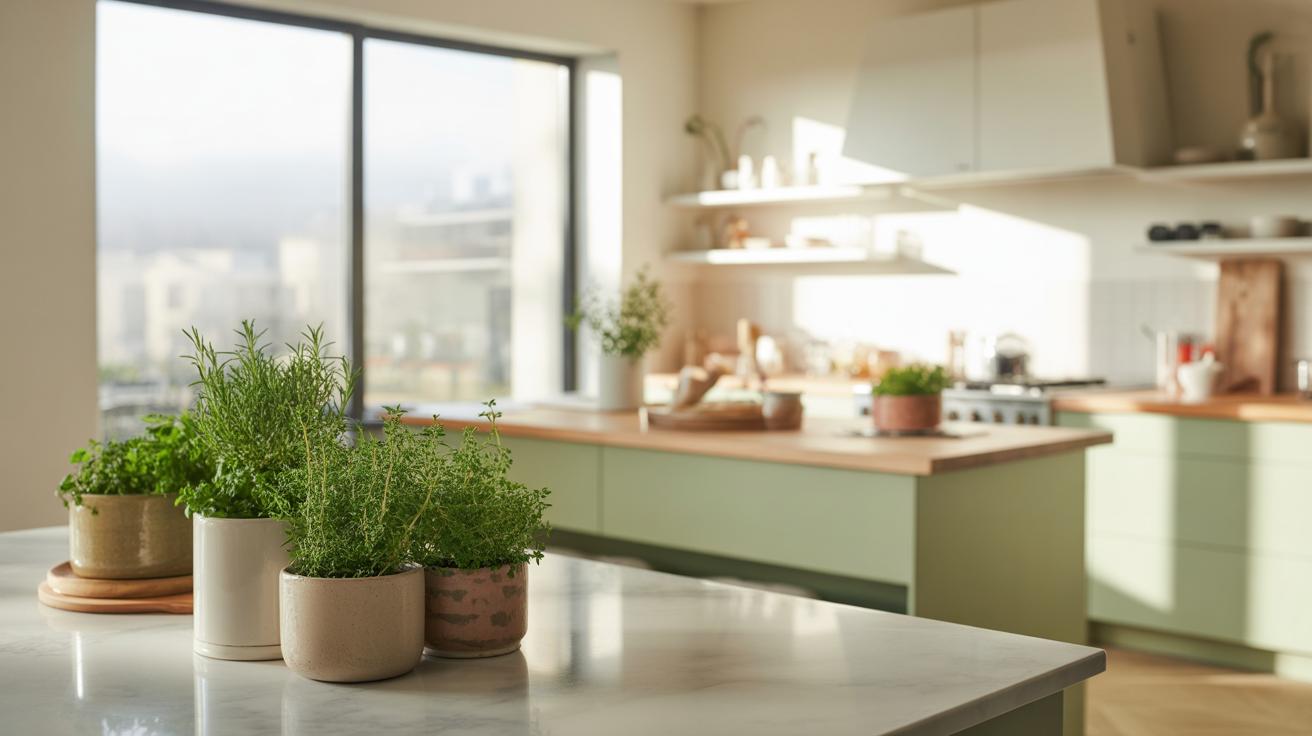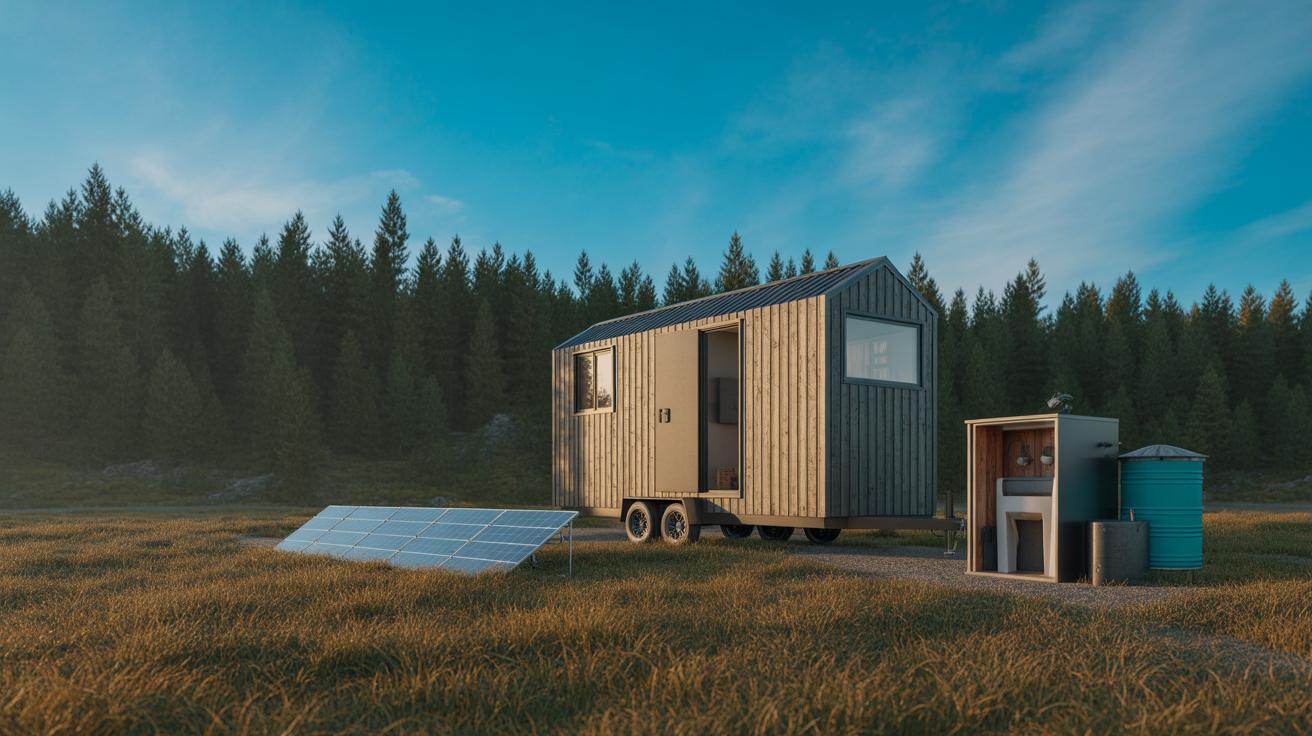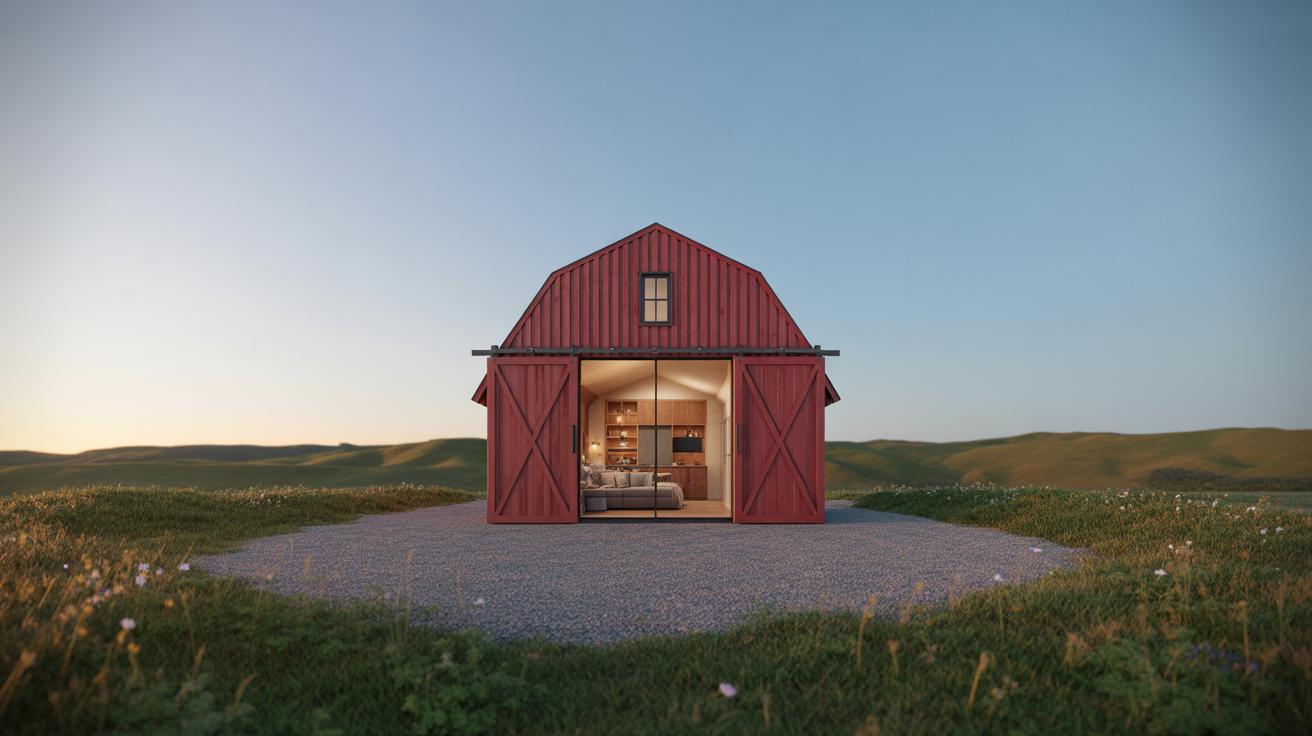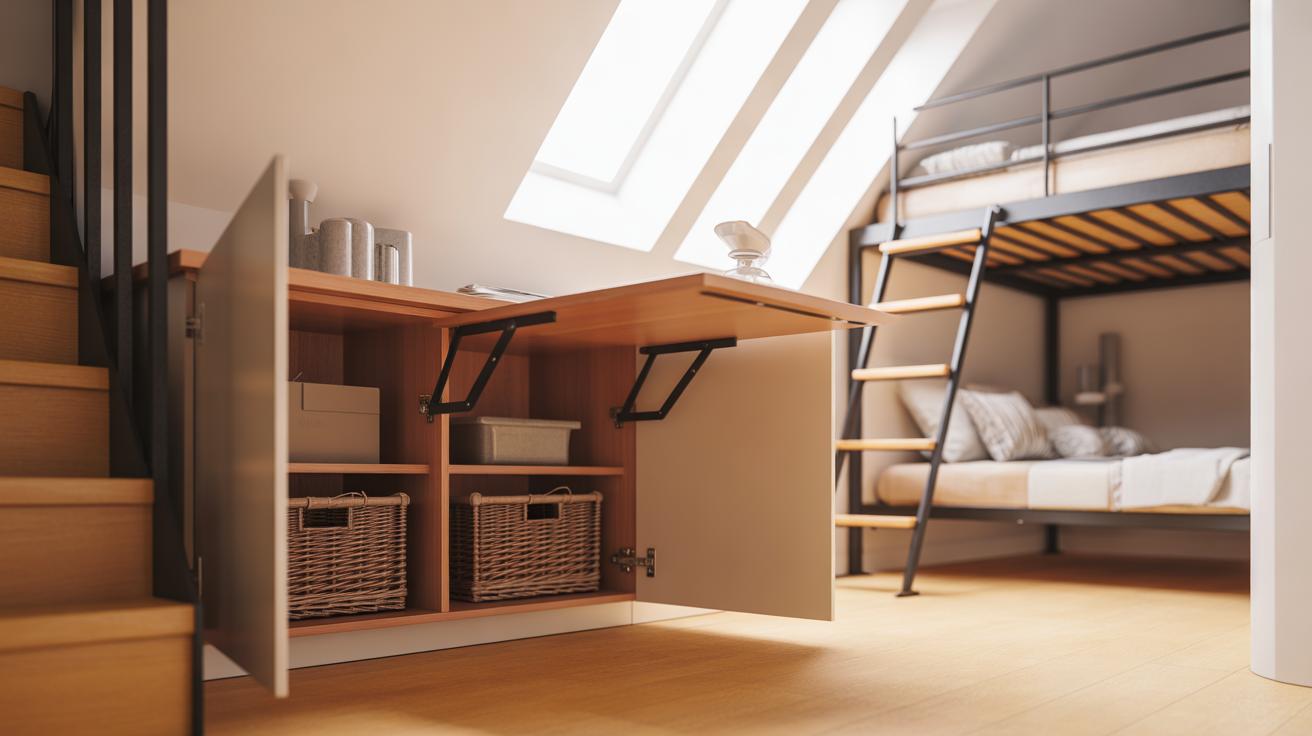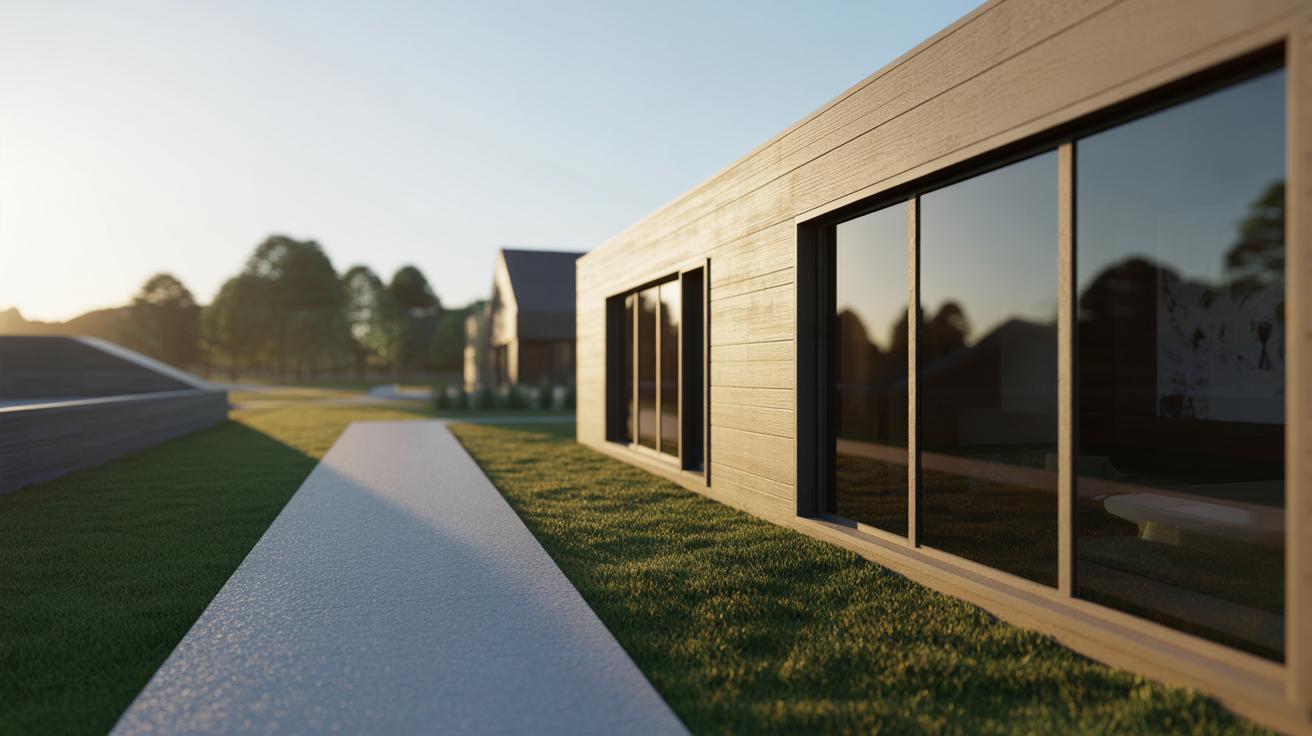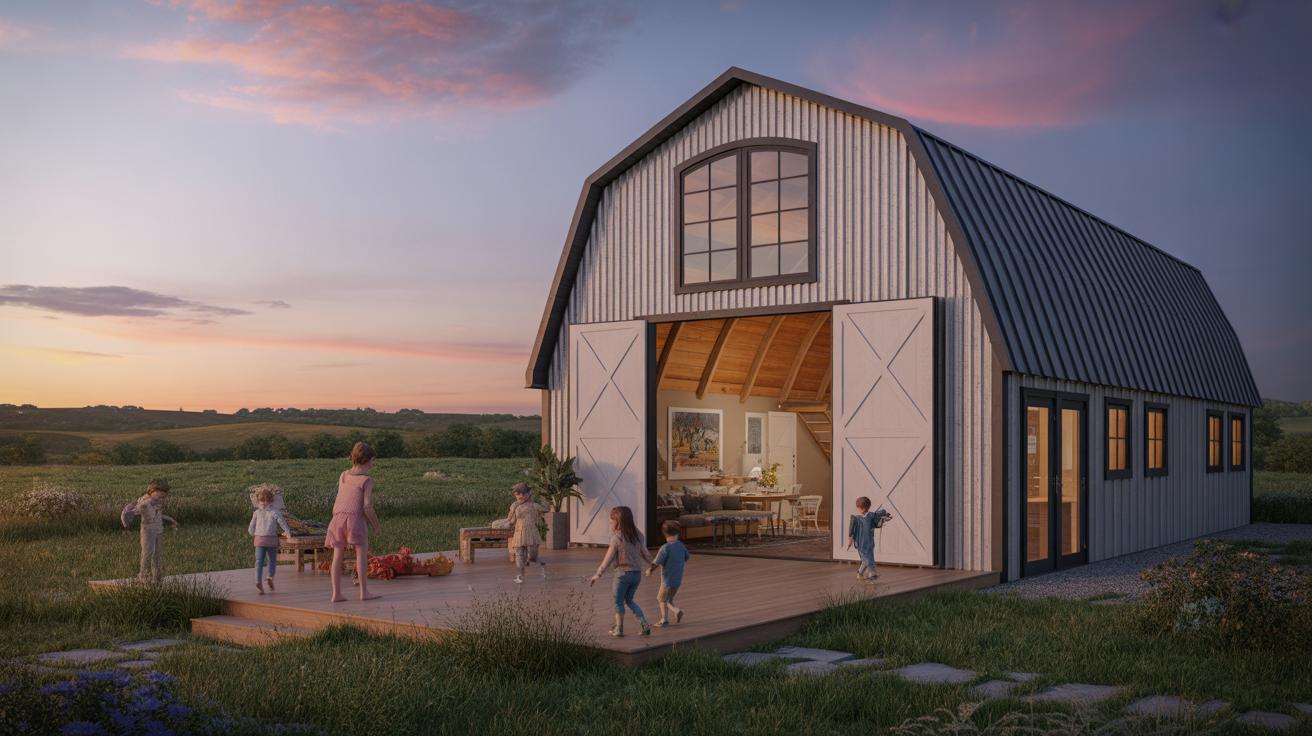Introduction
Sage green offers a peaceful and fresh look for kitchens. This hue connects to nature and brings a calm vibe. It can enrich your kitchen design, balancing modern and classic styles without overwhelming the space. Choosing sage green opens many design options for your kitchen walls, cabinets, or accents.
More homeowners seek spacious kitchen spaces. Making a kitchen feel bigger involves smart color use and layout choices. Sage green works well here. This guide explains how to use sage green in your kitchen to make it look open, bright, and comfortable. You will find ideas for colors, lighting, furniture, and decoration that complement sage green while adding to your kitchen’s spacious feel.
The Basics of Sage Green in Kitchen Design
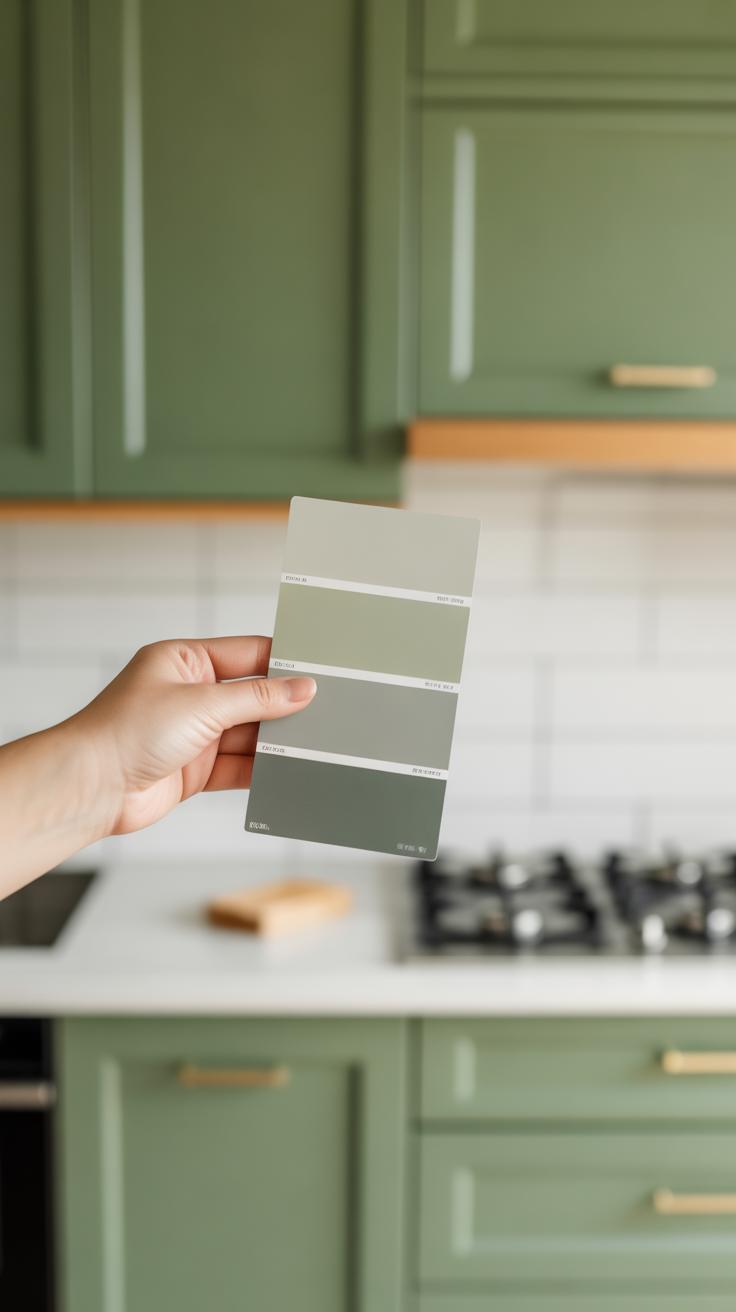
Sage green is a soft, muted green with subtle gray undertones. It draws inspiration from nature and evokes a quiet, peaceful feeling. This color works well in kitchens because it creates a calm and welcoming environment where people want to gather.
You can use sage green in many kitchen styles. It suits modern kitchens when paired with clean lines and sleek materials. It also fits traditional kitchens by adding warmth and depth to classic wood cabinets or vintage fixtures. In each case, sage green brings a natural balance without overwhelming the space.
Think about how your kitchen functions. Would a calming color help reduce stress during busy mornings? Sage green offers a quiet strength that supports relaxation and focus while still feeling fresh. This makes it a smart choice for spaces meant for cooking, eating, and socializing.
Understanding Sage Green Shades
Sage green covers a wide spectrum from light, minty hues to deeper, olive tones. Lighter shades work well on walls or backsplashes to open up the room and reflect more light. They keep the space bright and breezy.
Darker sage greens bring richness and can be perfect for lower cabinets or accent walls. These deeper tones add contrast without closing in the space. Combining different shades in your kitchen helps create layers and visual interest.
Consider your kitchen’s size and natural light. Use lighter tones if the room feels small or has limited sunlight. If your kitchen is spacious and bright, darker sage can add warmth without overwhelming.
Benefits of Choosing Sage Green
Sage green brings a sense of calm to your kitchen. This makes cooking and entertaining less stressful. The color suits many design styles, giving you freedom to change hardware, counters, or decor without clashing.
The balance between warm and cool tones in sage green helps your kitchen feel both inviting and spacious. It does not absorb too much light, which keeps the room bright and open. This quality supports creating a kitchen that looks larger than it actually is.
Choosing sage green means you select a practical color that blends well with natural materials like wood and stone. It also pairs nicely with metal finishes such as brass or stainless steel. Ask yourself how much flexibility you want for future updates—sage green adapts well to change.
Pairing Colors with Sage Green for Spaciousness
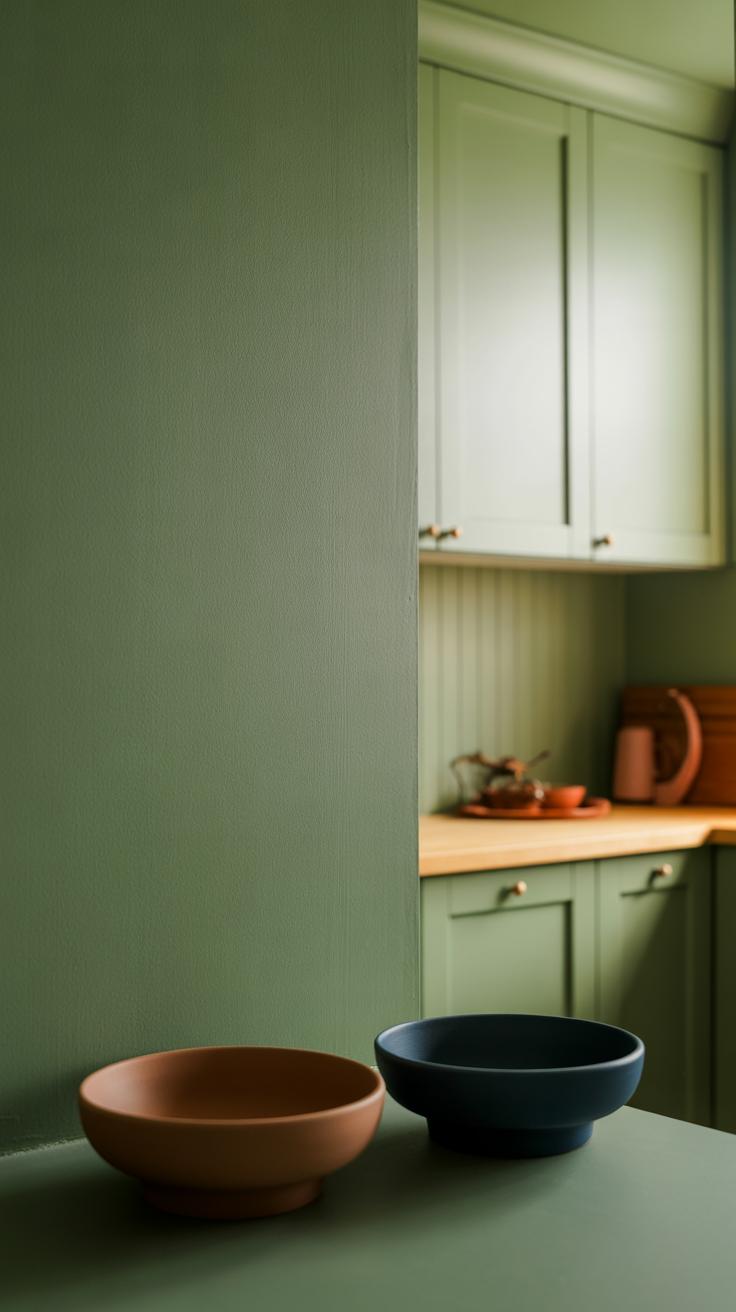
Combining sage green with other colors can make your kitchen feel larger and more open. Using light neutrals and white helps balance sage green’s calming tone while keeping the space bright. These shades reflect light and prevent the room from feeling heavy or boxed in. For example, pairing sage green cabinets with white countertops or light beige walls creates a clean, open vibe.
Wood tones add warmth without crowding the space. Think of a wooden dining table or open shelves made of oak or maple. These natural textures bring life and contrast without overwhelming the soft green.
Imagine your kitchen as a calming canvas where sage green meets white, soft neutrals, and wood. How can you arrange these colors to keep movement flowing? Which surfaces benefit most from a touch of natural texture to prevent the room from feeling flat? Thoughtful color pairing shapes the feeling of space as much as layout or lighting.
Using Light Neutrals and White
Light neutrals and white let sage green shine without shrinking your kitchen. They reflect daylight and brighten shadowy corners, avoiding a boxed-in feel. For instance, white subway tile backsplash next to sage green cabinetry keeps the space fresh and airy.
Consider light gray or soft cream walls as a backdrop for sage green accents. These shades prevent the green from feeling heavy, especially in smaller kitchens.
White or neutral-toned countertops and floors open up the room visually. Have you tried mixing white walls with sage green for your cabinets? Notice how the space feels less confined and more welcoming. Using these colors together maintains brightness, which is key to a spacious kitchen.
Incorporating Natural Wood Elements
Natural wood surfaces introduce warmth while preserving openness. A wooden countertop, a butcher block island, or light wood stools tie the space to nature and add texture. Wood prevents the kitchen from feeling cold or flat when paired with sage green and white.
Choose woods with lighter finishes, such as oak, ash, or birch. These blend well with sage green and keep the kitchen feeling airy. Dark woods can sometimes absorb light, shrinking the look of your space.
Think about adding open wooden shelves or a wooden dining table near your sage green kitchen area. Does the warmth balance the coolness of the green? These materials often make the kitchen more inviting without crowding the space visually. How can wood bring balance to your design?
Optimizing Lighting to Enhance Sage Green
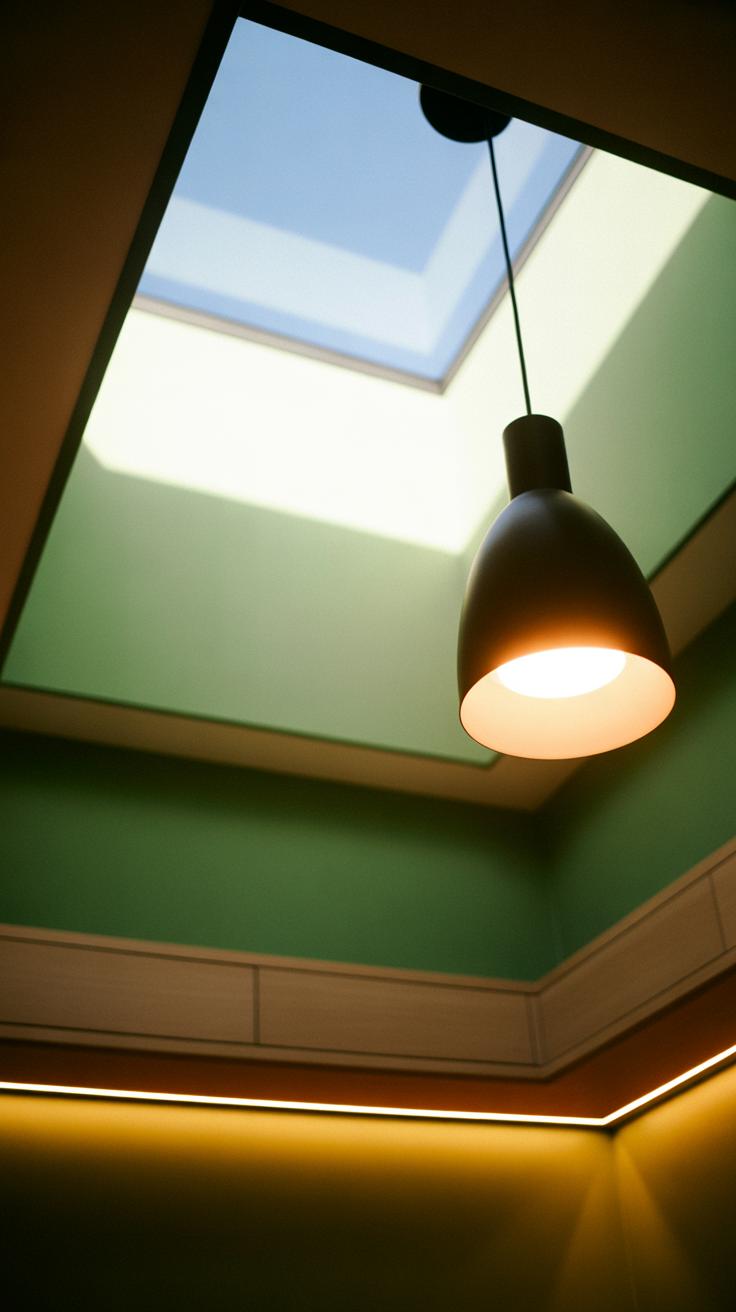
Lighting plays a key role in how your sage green kitchen looks and feels. The way light hits sage green surfaces can make the color appear fresh, muted, or even dull. You need lighting that lifts the tone and keeps the space bright and open.
Natural light tends to bring out sage green’s soft, earthy quality. It changes throughout the day and can highlight subtle variations in the paint or cabinetry. Think about how sunlight flows into your kitchen and how shadows form. Are there windows you can clear to let more daylight inside?
Artificial light must balance warmth and brightness without washing out sage green. Bulbs that emit soft white light work well here—they keep the color rich while avoiding harshness. Position lights to reduce dark corners, especially near work areas and countertops.
You can combine natural and artificial lighting to create layers of brightness that make the room feel open. What types of lighting fixtures in your kitchen help sage green look its best? Adjusting your kitchen’s lighting is one of the easiest ways to maintain a spacious feel while enjoying this calm color.
Maximizing Natural Light
Big windows or glass doors bring fresh air and sunlight into your sage green kitchen. If your space has smaller or fewer windows, find ways to increase daylight flow. Removing heavy curtains or replacing thick drapes with sheer fabrics opens the room up.
Mirrors and reflective surfaces help bounce light around. A large mirror placed opposite a window can double natural light effect. Light-colored backsplashes or countertops also reflect sunlight and prevent the room from feeling closed in.
Keep windows clean and unobstructed. Outdoor plants or furniture blocking your view might reduce the light entering. Think about how trimming bushes or moving objects may bring sunshine inside. Your sage green walls and cabinets will shine brightest with plenty of daylight around.
Selecting the Right Artificial Lighting
Choose light bulbs with a color temperature between 2700K and 3000K. This warm white light complements sage green, balancing its cool, muted tone. Avoid bulbs that cast blue light, which can make sage green appear dull or cold.
Layer your lighting using a mix of overhead fixtures, task lights, and accent lighting. Recessed ceiling lights spread light evenly, while under-cabinet lights add brightness to work surfaces. Pendant lamps over an island give focused light where you need it most.
Fixtures with glass or white shades help soften and diffuse the light. Metal finishes like brass or matte black add contrast without overpowering the color palette. Could adjusting the brightness or adding dimmer switches change how your sage green kitchen feels at different times?
Choosing Kitchen Cabinet Finishes and Hardware

Choosing the right cabinet finish in sage green shapes how your kitchen feels. Matte finishes offer a soft, muted look that reduces glare and creates a calm atmosphere. This helps the space appear larger because matte surfaces absorb light gently. Glossy finishes, on the other hand, reflect more light, making the kitchen brighter but sometimes overwhelming smaller spaces. Which finish suits your kitchen depends on how much natural light you have and the mood you want.
Simple hardware keeps your sage green cabinets from feeling crowded. Slim, streamlined handles in brushed nickel or matte black maintain a clean look without drawing too much attention. Avoid overly decorative knobs or bulky pulls that can clutter the visual flow. Think about handles that fit comfortably in your hand and complement your cabinet color for a balanced design.
Carefully pairing cabinet finishes with understated hardware helps your sage green kitchen feel open and inviting. Ask yourself: would a glossy finish enhance your light, or would matte help calm the room? Could slim hardware support the spacious effect created by your color choice? These decisions keep your kitchen feeling fresh without sacrificing style.
Matte Versus Glossy Finishes
Matte finish cabinets give a soft, flat surface that locks in color without shine. This minimizes reflections, making the kitchen feel restful and more spacious by avoiding visual noise. When light hits matte surfaces, it scatters evenly, preventing glare.
Glossy finishes increase light reflection, which can brighten the room but may also highlight fingerprints or smudges. The shine can make spaces feel more lively but might overwhelm smaller kitchens if overused.
If you want a calm and open look, matte sage green helps expand your space quietly. For more energetic or modern kitchens, gloss adds brightness but consider balancing it with simpler styles elsewhere to avoid visual clutter.
Hardware Styles That Enhance the Look
Choose hardware that supports the smooth, airy feel of a sage green kitchen. Straight bar pulls, thin cup pulls, or minimalistic knobs keep your cabinets looking neat. These designs don’t distract from the cabinet color or crowd your eye.
Hardware in finishes such as matte black, brushed brass, or satin nickel blends well without competing. Small, clean lines enhance spaciousness by maintaining an uncluttered design. Avoid oversized or heavily patterned hardware that can break up your clean surfaces.
Consider how the size and shape of your handles allow for easy use while keeping the kitchen feeling open. Simple, functional hardware supports both usability and the timeless appeal of a sage green kitchen.
Furniture and Fixtures That Complement Sage Green
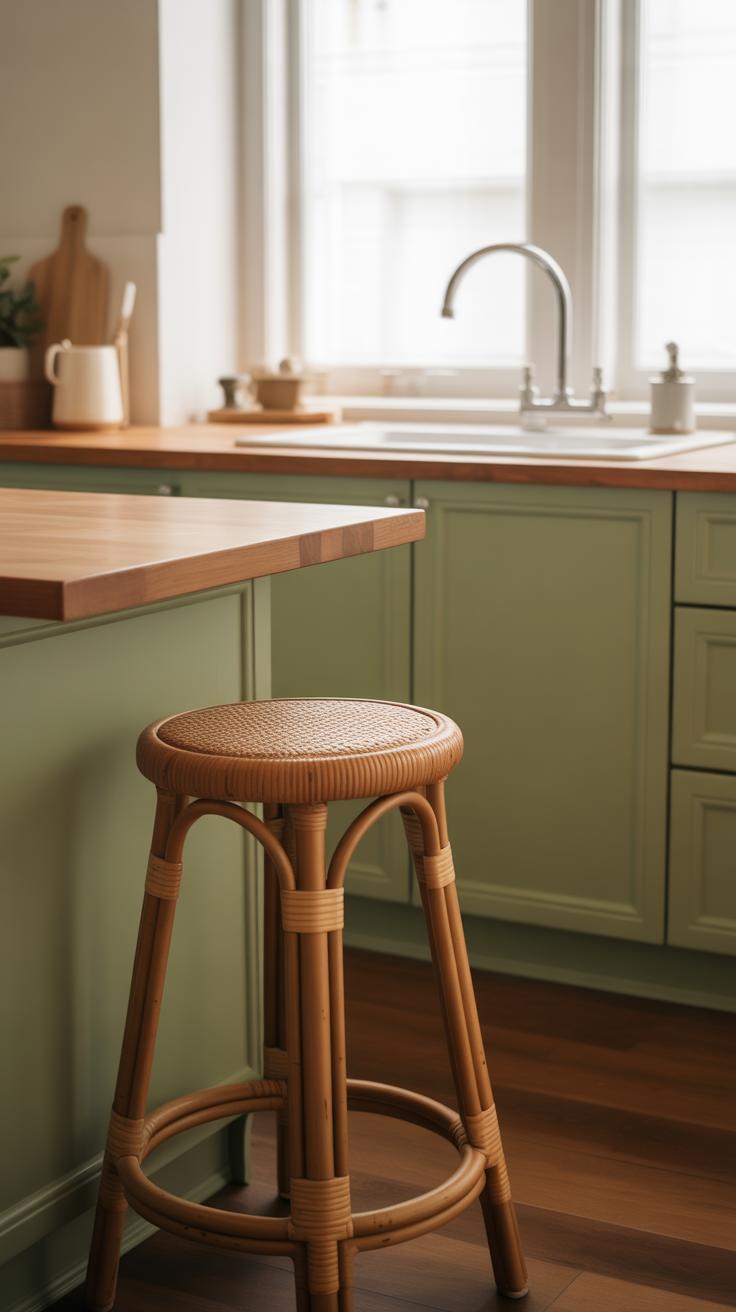
Choose furniture that helps your sage green kitchen feel open and roomy. Opt for pieces with clean lines and simple shapes. Bulky furniture can make a kitchen feel cramped, especially in smaller spaces. Instead, pick lightweight chairs and stools made of materials like wood or metal. These keep the look fresh while letting light move around the room.
Look for tables and counters with slim legs. This design allows more floor space to show, which makes your kitchen feel larger. Glass or light-colored tabletops can also balance the richness of sage green without overwhelming the room.
Your fixtures should support both style and space-saving needs. Consider installing pull-out faucets and under-cabinet lighting. These tools save countertop surface area and keep the space bright. Matte or brushed finishes in nickel or brass match well with sage green tones without adding visual weight.
Can your fixtures perform double duty? Features like built-in spice racks or hidden storage keep your kitchen organized while preserving a clean look. Functional fixtures that blend with sage green create a calm, uncluttered environment where cooking and gathering feel easy and inviting.
Minimalist Furniture Choices
Minimalist furniture makes your sage green kitchen feel larger by cutting down on clutter. Select chairs and tables with slim profiles and straight edges. Avoid overly ornate designs. This keeps the space open and easy to move through.
Pick stools and chairs that are lightweight and easy to move. This gives you flexibility and prevents the kitchen from feeling crowded. Transparent or lightly stained wood furniture adds warmth without heaviness.
If you want to include seating, consider benches or stackable chairs you can tuck away. Ask yourself, how much furniture do you really need to keep the room functional but free? Minimalist choices promote simplicity and make the sage green stand out.
Functional Fixtures for Open Feel
Choose fixtures that reduce clutter and improve usability in your sage green kitchen. Wall-mounted faucets free up counter space, making your workspace feel wider. Slim-profile pendant lights above your island provide focused lighting without bulk.
Look for pull-down or touch-operated faucets that add convenience without extra handles or knobs. Fixtures with clean, simple shapes create less visual noise and match the calm nature of sage green.
Consider open shelving with subtle brackets instead of full cabinets. This opens up walls and keeps your kitchen feeling airy. Could built-in organizers or under-shelf lighting improve your workflow while maintaining space? Functional fixtures that blend with your color palette help keep your kitchen both welcoming and efficient.
Using Textures and Accessories Wisely
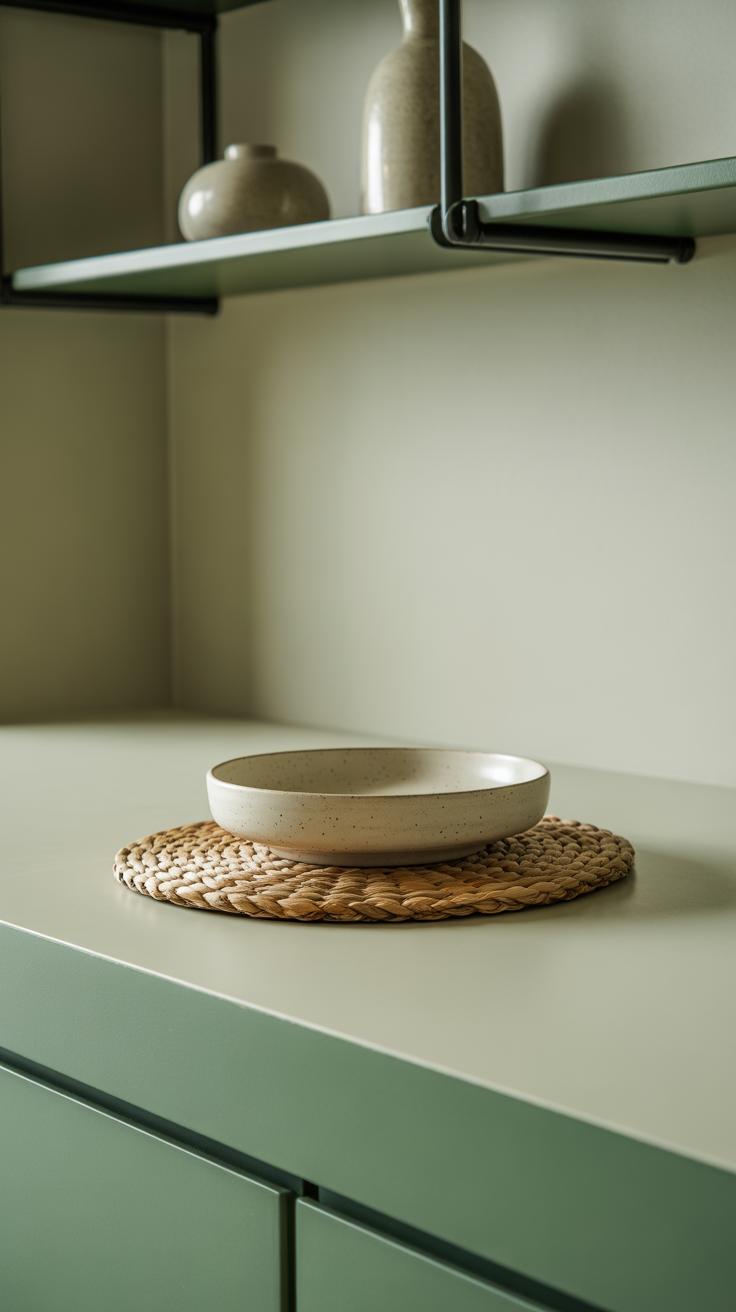
Your sage green kitchen can feel spacious while still full of life if you choose textures and accessories carefully. Textures add depth without creating clutter, so think about how different materials interact with sage green’s calm shade.
Subtle Texture Choices
Incorporate natural textures like linen curtains or seat cushions to soften the look. Linen has a light, breathable feel that doesn’t overwhelm the space. Wooden elements, such as cutting boards or open shelves, offer warmth and contrast, but keep them light or medium-toned to maintain airiness.
Stone countertops or backsplash tiles with fine grain complement sage green well and give an organic touch. Smooth or matte finishes also help to prevent visual crowding. Ask yourself if each texture adds to your kitchen’s openness or makes it feel busy.
Selecting Accessories to Pop
Use accessories to bring out the best in sage green without crowding the counters. Choose items in colors that contrast softly, like warm terracotta, soft peach, or creamy white. A simple vase or ceramic bowl can stand out and add interest without taking up much space.
Select accessories with clean lines and moderate size. Avoid too many small objects, which create clutter. Think about practical pieces like minimalistic salt and pepper shakers or sleek utensil holders that lift the look without overwhelming.
How can you balance decoration and space so your kitchen feels inviting and open? Focusing on texture and carefully chosen accessories keeps your sage green kitchen both fresh and spacious.
Maximizing Storage to Maintain Spaciousness
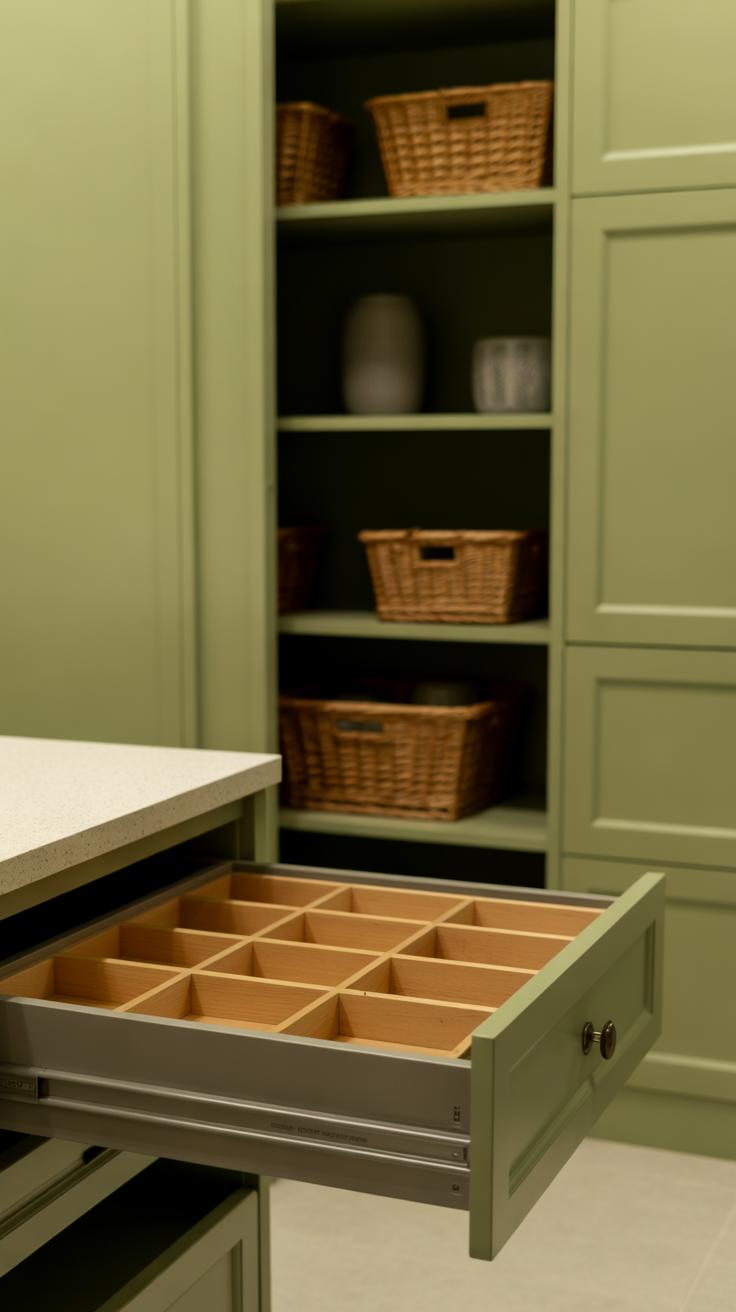
Keeping your sage green kitchen neat helps keep the space feeling open. Clutter can quickly make any kitchen feel cramped and smaller than it is. Clever storage solutions give each item a home and clear surfaces to maintain that open look. Think about how often you use certain items. Group everyday tools within easy reach. Store less-used items in less accessible spots to avoid crowding counters.
Use vertical space wisely with racks or hooks for pots, pans, or utensils. Clear containers for dry goods also cut down visual clutter, making your sage green kitchen more inviting. When you limit what’s on display, your eye senses more space. How much open space do you want to keep? What will you store out of sight? Asking these helps you plan smarter storage to keep your kitchen airy and simple.
Built-in Storage Options
Built-in shelves and cabinets that match your sage green color blend neatly into the room. This keeps the room from feeling chopped up by different colors or shapes. When the storage looks like part of the design, it feels less busy. Slim cabinets that reach to the ceiling use every inch without making the room heavy.
Consider hidden compartments or drawers behind cabinet doors for smaller items. Built-in spice racks, pull-out trays, or deep drawers for pots keep everything orderly and out of sight. These features hide clutter so your counters stay clear. Choosing cabinetry and shelves with clean lines helps maintain the calm, spacious feeling your sage green palette creates.
Decluttering Tips for Spacious Look
Regularly clearing your kitchen makes it easier to keep open space. Set a weekly routine to put away items and toss expired food. Avoid keeping too many gadgets or duplicates. Ask yourself if each tool or item adds real value to your kitchen. If not, consider donating or storing it elsewhere.
Use drawer dividers and bins to organize small items. Group similar objects together so you can quickly find what you need. Clear containers make supplies easy to see at a glance. A tidy kitchen invites you to maintain it. What habits can you change to reduce clutter today? Small, consistent actions help your sage green kitchen stay open and relaxing.
Balancing Style with Function in Sage Green Kitchens
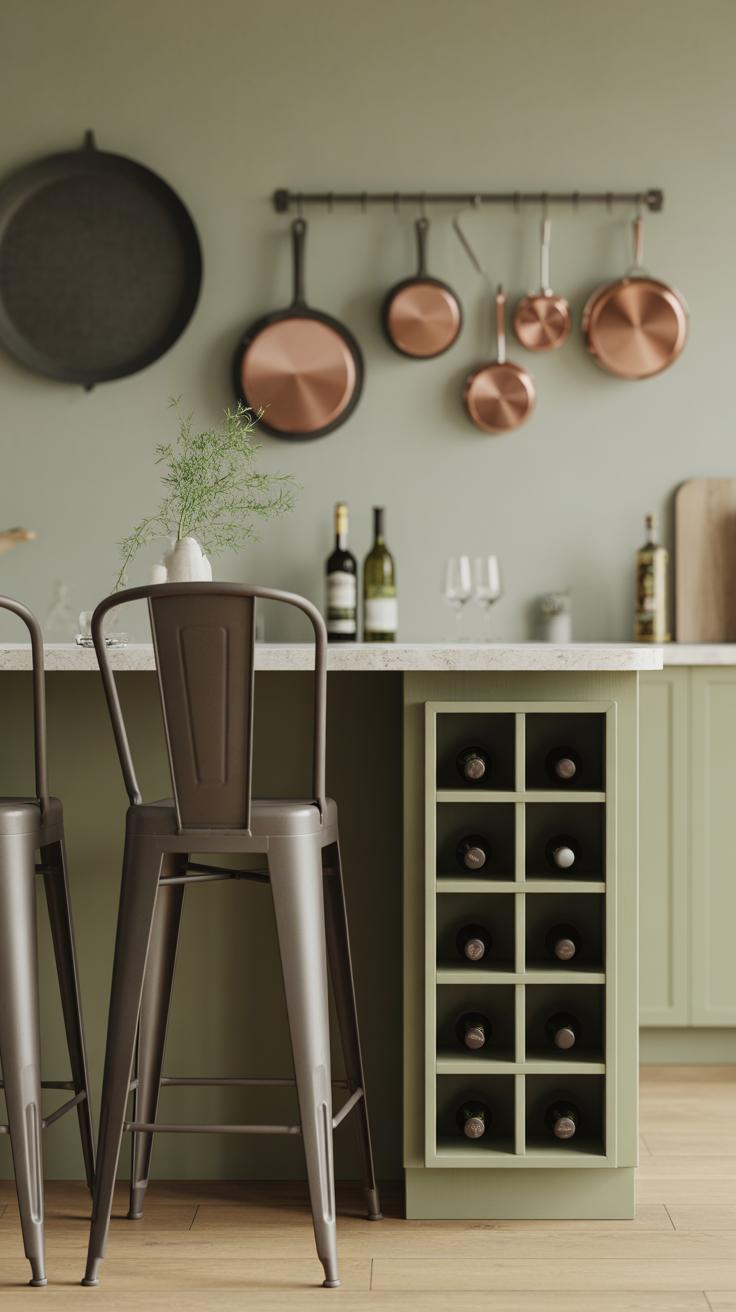
Creating a kitchen with sage green requires more than choosing a beautiful color. You want your kitchen to work well for daily tasks while feeling open and airy. Think about how you move in your kitchen. Arranging counters, sink, and stove so you can move smoothly reduces clutter and prevents cramped spots.
Choose surfaces and fixtures that match the soft tone of sage green. Avoid heavy or dark finishes that can weigh down the room. Light countertops and sleek hardware keep things looking fresh and spacious. Consider open shelves or glass-front cabinets to add depth without sacrificing storage.
Ask yourself: Does this setup support cooking without crowding me? Can I reach what I need without stepping into tight spaces? Keeping answers positive helps balance style with real-life kitchen use. A kitchen that flows well respects your time and keeps the calming effect of sage green intact.
Prioritizing Functional Layout
Arrange your kitchen for easy movement. The classic work triangle—between your stove, sink, and fridge—should feel natural, avoiding long walks or awkward turns. Placing islands or counters too close can block paths and reduce openness.
Consider layouts like L-shaped or U-shaped to use space smartly. These shapes provide clear zones for cooking, prep, and cleaning without crowding. If space allows, an island with built-in storage keeps essentials nearby but out of the way.
How do you currently use your kitchen? Measuring yourself moving through it during busy moments helps identify bottlenecks. A well-planned layout lets you cook and clean with fewer interruptions. This supports the light, spacious feeling that sage green promotes.
Integrating Modern Appliances Seamlessly
Select appliances that blend with your sage green scheme. White, black, or stainless steel finishes can clash or stand out too sharply. Some brands offer appliances with panel-ready fronts that match your cabinetry, creating a smooth, continuous look.
Hide bulky ovens or refrigerators behind cabinet doors to avoid breaking up your color flow. Built-in microwaves and dishwashers reduce countertop clutter. Aim for appliances scaled to your kitchen size—oversized machines make a space feel tighter.
Think about your daily routines. Which appliances do you use most? Keep those easily accessible but tucked into the design. Less-used gadgets can stay in a pantry or lower cabinet. This keeps your counters open and your sage green kitchen feeling airy and uncluttered.
Conclusions
Sage green is a strong choice for kitchen design that aims to be both stylish and spacious. The color’s natural tones help in crafting an airy, relaxed atmosphere. Combining sage green with light shades and transparent materials amplifies the space feeling. Proper lighting and minimal clutter add to the openness. Your kitchen can gain in both function and look using these principles.
Reflect on your kitchen layout and how the sage green hue fits into your style. Small tweaks can make a big difference in room feel. Consider your kitchen’s lighting and storage to keep it from feeling cramped. Keep practical tips in mind to turn your kitchen into a spacious and inviting heart of your home.


